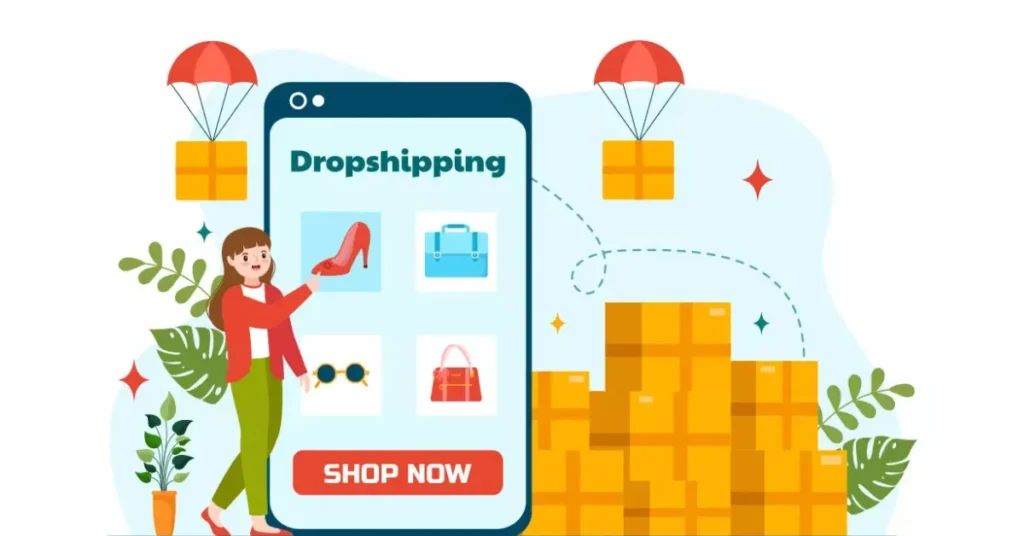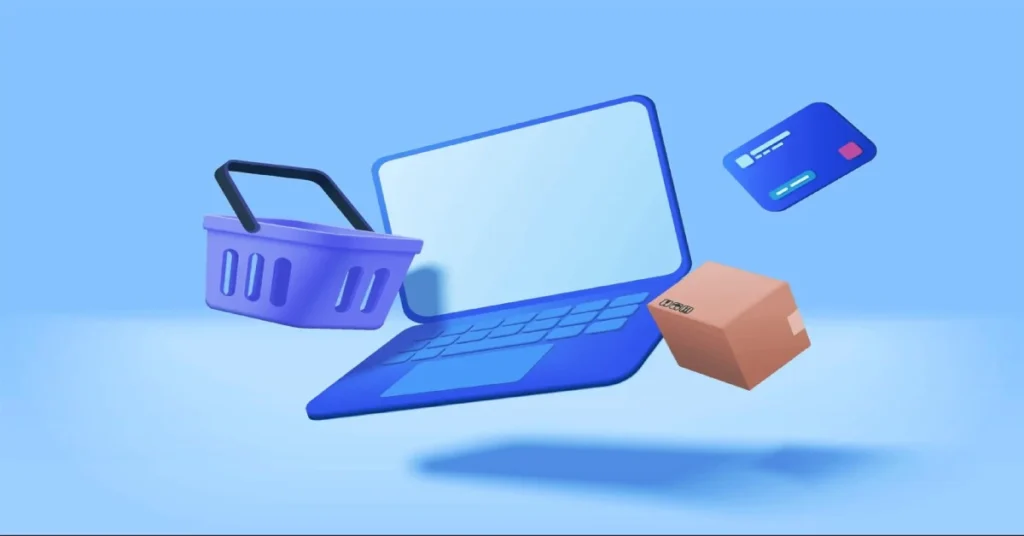How to make money on Shopify? You’re in the right place! Thousands of entrepreneurs across the United States are building thriving businesses on this platform. It offers a powerful way to turn your ideas into a source of income. But where do you start? I’ll show you how to navigate the world of online selling and build a successful Shopify store.
Shopify is more than just a website builder. It is a complete commerce platform. It helps you sell products and services online, in person, and across social media. From small side hustles to large-scale operations, Shopify provides the tools you need. Let’s explore how you can use Shopify to create a profitable venture.
In your journey to make money on Shopify, you’ll soon realize that attracting visitors is only half the battle. Converting those visitors into paying customers often comes down to how your store looks and functions. That’s where tools like Shogun Page Builder become invaluable. To discover how you can create engaging and high-converting pages that truly capture your audience’s attention and drive sales, read our in-depth guide: Shopify Shogun Page Builder: Create Stunning, High-Converting Pages.
Your Path to Profit: Popular Shopify Business Models

Shopify supports many ways to earn income. Choosing the right model depends on your interests and resources. I will break down the most popular options. According to the Oberlo article, the US e-commerce market is experiencing robust growth, with sales projected to reach $1.19 trillion in 2024 and an estimated $1.47 trillion in 2025, accounting for 18.4% and 21% of total retail sales, respectively.
Amazon dominates the market with a 37.6% share, while fashion and electronics lead B2C sales. Key drivers of online purchases include free delivery and discounts, with 99% of customers consulting reviews. Emerging trends include the rise of social commerce, augmented reality in shopping, AI-powered personalization, and Buy Now, Pay Later (BNPL) options, alongside a growing emphasis on sustainability and supply chain optimization.
Selling Physical Products
This is what most people think of when they consider e-commerce. You sell tangible goods that customers receive in the mail.
- Dropshipping: Sell Without Holding Stock
- What it is: You list products on your Shopify store. When a customer makes a purchase, a third-party supplier ships the item directly to them. You never touch the product.
- Benefits: Low startup cost, no need for storage space, and a huge variety of products to choose from. You can test many product ideas quickly.
- Challenges: Lower profit margins compared to holding inventory, heavy reliance on your supplier’s quality, and shipping times. You must trust your partners.
- Keys to Success: Find a specific niche. Choose reliable suppliers with good reviews. Focus on strong marketing to attract buyers.
- Print-on-Demand (POD): Design and Sell Custom Goods
- What it is: You create unique designs. You put these designs on products like t-shirts, mugs, or phone cases. A POD company prints and ships the items only after a customer orders them.
- Benefits: Express your creativity. No need to store inventory. You offer personalized items.
- Challenges: Profit margins depend on the base product cost and printing fees. Ensuring high-quality prints and products is essential.
- Keys to Success: Develop truly unique and appealing designs. Build a strong brand around your designs. Partner with quality POD suppliers.
- Hand-made or Crafted Goods: Share Your Creations
- What it is: You produce your own items. This could be jewelry, art, candles, or custom furniture.
- Benefits: Higher profit margins because you control production costs. You build a strong, authentic brand story around your unique creations.
- Challenges: Managing inventory for your raw materials and finished goods. Production time can limit how much you sell.
- Keys to Success: Focus on craftsmanship. Tell your brand story effectively. Streamline your production process as much as possible.
- Private Label or Wholesale: Your Brand, Your Products
- What it is: You source generic products from manufacturers. You then put your brand label on them (private label). Or, you buy products in large quantities at a lower price and resell them individually (wholesale).
- Benefits: Often higher profit margins than dropshipping. You have more control over branding and product quality.
- Challenges: Requires a larger upfront investment in inventory. Deep market research is vital to ensure demand.
- Keys to Success: Rigorous quality control. Strong relationships with reliable suppliers. Effective brand building and marketing.
- Subscription Boxes: Recurring Revenue Delivered
- What it is: You curate a selection of products. Customers pay a recurring fee to receive a box of these items regularly (monthly, quarterly).
- Benefits: Predictable recurring revenue. Builds strong customer loyalty and community.
- Challenges: Complex logistics and inventory management. You must consistently offer fresh, exciting products to keep subscribers.
- Keys to Success: Unique product curation. Excellent customer retention strategies. Efficient shipping and billing.
Selling Digital Products
Digital products are items customers download or access online. They offer high-profit potential.
- What it is: Examples include eBooks, online courses, software, templates, stock photos, music, or digital art.
- Benefits: Very high profit margins because there are no physical production or shipping costs. Potential for truly passive income after initial creation.
- Challenges: The initial time and effort to create high-quality content. Effective marketing is crucial to stand out.
- Keys to Success: Create valuable content that solves a problem or provides clear benefits. Use strong marketing to reach your audience. Ensure secure and easy delivery.
Selling Services
You can use Shopify to sell your expertise and time.
- What it is: This includes consulting, coaching, graphic design, web development, or any other freelance service.
- Benefits: You use your existing skills. Direct client relationships can lead to loyal customers.
- Challenges: Your time is limited, so scaling can be difficult. You must manage client expectations and project timelines.
- Keys to Success: Clearly define your service offerings. Showcase a strong portfolio of your work. Gather client testimonials to build trust.
Other Ways to Make Money on Shopify
- Shopify Affiliate Marketing: Promote Shopify plans or apps. You earn a commission for each referral.
- Building and Flipping Shopify Stores: Create profitable stores from scratch. Sell them to other entrepreneurs looking for a ready-made business.
- Developing Shopify Apps or Themes: If you have coding or design skills, you can create and sell apps or themes on the Shopify App Store or Theme Store.
Your Blueprint for Success: Setting Up Your Shopify Store

Building a successful Shopify store starts with solid planning. Let’s walk through the essential steps. Shopify is a leading global e-commerce platform, hosting over 5.54 million live stores worldwide, with the majority in the US, and holding a significant 28-30% market share in the US e-commerce platform market.
In Q3 2024, Shopify’s revenue reached $2.16 billion, contributing to $444 billion in global economic activity from its merchants and serving over 875 million unique shoppers. The platform is supported by over 10,000 apps, with key features like Shopify Payments ($42.9 billion processed in Q3 2024) and Shop Pay (200+ million users) enhancing merchant operations. Apparel is the most popular product category, and the average conversion rate for Shopify stores is 1.4%. (Source: Shoptrail)
Picking Your Niche and Understanding Your Market
Choosing the right niche is foundational. It affects everything from your product choices to your marketing efforts.
- Finding Your Sweet Spot: Look for areas with real customer needs or interests. Use tools like Google Trends to see what’s popular. Research your potential competitors. What are they doing well? Where can you do better?
- Knowing Your Customers: Who are you selling to? What are their ages, interests, and income levels? What problems do they face that your product or service can solve? Creating a clear customer profile helps you tailor everything.
- Testing Your Ideas: Before you invest heavily, try to validate your product or service idea. Could you survey potential customers? Or launch a small test campaign?
Preparing Your Business Finances
Many new entrepreneurs focus on product and marketing. They often overlook crucial financial planning. A clear financial picture is vital for making money on Shopify.
- Your Simple Business Plan: You don’t need a massive document. Outline your product, target audience, how you will reach them, and your financial goals. This keeps you focused.
- Seeing the True Costs: Beyond the basic Shopify plan, what else will you pay for?
- Initial Setup: Domain name (around $10-20/year), premium theme (optional, $180-350 one-time), essential apps (can add $20-100+ per month), professional product photography.
- Ongoing Operations: Shopify subscription, payment processing fees (around 2.9% + $0.30 per transaction), advertising costs, shipping labels, packaging materials, and potential return costs.
- Hidden Expenses: Customer service tools, accounting software, legal advice, and professional development courses can all add up.
- Real Example: Many beginners budget for ads but forget payment processing fees. For every $1,000 in sales, roughly $30 goes to payment processors. Overlooking this adds up quickly.
- Understanding Your True Profit: How much tually keep from each sale?
- Cost of Goods Sold (COGS): The direct cost of making or acquiring your product.
- Operating Expenses: All the costs to run your business, not directly tied to making one product (e.g., Shopify plan, app subscriptions, advertising).
- Example Calculation: If a t-shirt costs you $10 to print and ship, and you sell it for $25, your gross profit is $15. But if your marketing for tcostssale cost $5, and a portion of your Shopify fees equates to $2, your net profit is only $8. Knowing these numbers is crucial for pricing your products correctly and ensuring long-term financial health.
- Finding Initial Funds for Your Business: Where will your startup money come from?
- Personal Savings: The most common starting point.
- Small Business Loans: Organizations like the Small Business Administration (SBA) offer programs for new and existing businesses in the US. Look into microloan programs for smaller amounts.
- Friends and Family: A common source for early-stage funding.
- Crowdfunding: Platforms like Kickstarter or Indiegogo can help you raise money by pre-selling products or offering rewards.
- Did you know? According to a 2023 study by Guidant Financial, 35% of small business owners used personal savings to start their businesses, while only 12% secured bank loans.
Building Your Shopify Store
This is where your vision takes shape.
- Picking Your Shopify Plan: Shopify offers different pricing tiers. Start with a basic plan if you are new. You can always upgrade as you grow. Choose a plan that matches your current sales volume and needed features.
- Your Store’s Name and Look: Choose a domain name (your website address) that is easy to remember and relates to your brand. Develop a consistent brand image: colors, fonts, and logo.
- Choosing and Changing Your Store’s Theme: Shopify themes control your store’s appearance. Pick a theme that looks professional and fits your brand. Ensure it looks good on phones and tablets. Shopify’s drag-and-drop editor makes customization simple, even without coding knowledge.
- Adding Your Products:
- Pictures Sell: Use high-quality, professional photos and videos. Show your product from different angles. Show people using it.
- Words that Convert: Write clear, engaging product descriptions. Explain benefits, not just features. Include relevant keywords to help customers find you on Google.
- Smart Pricing: Research competitor pricing. Consider offering different price points or bundles.
- Setting Up Payments: Make it easy for customers to pay. Shopify Payments is built-in and secure. Offer other options like PayPal, Apple Pay, and Google Pay to cater to all customers.
- Shipping Your Products:
- Clear Policies: Clearly state your shipping costs, delivery times, and return policy. Transparency builds trust.
- Picking Carriers: Research options like USPS, FedEx, and UPS. Compare rates and services.
- Thinking Bigger (International Shipping): If you plan to sell globally, research customs forms, duties, and international shipping rates early. Many new sellers focus only on domestic sales and then struggle to expand internationally. Shopify has tools to help calculate these costs, but understanding the nuances of each country’s import regulations is a continuous learning process.
Legal Essentials for Your US-Based Business
Navigating legal requirements can feel daunting. But taking the right steps protects your business and yourself. Many online guides touch on legalities but rarely provide actionable steps tailored for US sellers.
- Registering Your Business:
- Employer Identification Number (EIN): If you plan to hire employees or operate as a corporation/LLC, you’ll need an EIN from the IRS. It’s like a Social Security number for your business.
- State and Local Licenses: Requirements vary by state and city. You might need a general business license, a vendor permit, or specific licenses depending on your product (e.g., food, cosmetics). Check your state’s Secretary of State website and your city/county clerk’s office.
- Real Example: A small candle maker in California might need a city business license, a Seller’s Permit from the California Department of Tax and Fee Administration for sales tax, and potentially fire safety certifications if selling to retail.
- Sales Tax Collection: A State-by-State Puzzle:
- In the US, sales tax is complex. You typically collect sales tax only in states where you have “sales tax nexus” (a physical presence or significant sales activity).
- Shopify has settings to help calculate and collect sales tax. However, you are responsible for knowing your obligations in each state. Tools like TaxJar or Avalara can automate this process.
- Imagine: You sell T-shirts. If your business is in Florida, you collect Florida sales tax from Florida customers. If you use a warehouse in California, you might establish nexus there, too, needing to collect California sales tax. This can be complex, and many new sellers underestimate this challenge.
- Crucial Legal Pages for Your Store:
- Privacy Policy: Explains how you collect, use, and protect customer data. Required by law (e.g., California Consumer Privacy Act – CCPA).
- Terms of Service (ToS): Outlines the rules for using your website and purchasing from your store. It includes disclaimers and limitations of liability.
- Refund Policy: Clearly states your return, exchange, and refund rules. Be transparent to build customer trust.
- Why this matters: A clear refund policy prevents disputes. A robust privacy policy protects you from legal issues regarding data.
- Consumer Protection Rules:
- The Federal Trade Commission (FTC) sets rules for advertising and selling online. This includes truthful advertising, honoring your promises, and safe handling of customer data.
- Protecting Your Ideas:
- Copyright: Automatically protects your original creative works (photos, designs, written content).
- Trademarks: Protect your brand name, logo, and slogans. Consider registering a trademark if your brand is unique and you plan to grow significantly.
- Consider: If you dropship, ensure the products you sell do not infringe on existing trademarks or patents.
Attracting Buyers and Closing Sales: Marketing & Conversion Strategies

Once your store is ready, you need to attract customers. Then, you need to convince them to buy.
Basic Marketing Fundamentals
- Getting Found on Google (SEO):
- Keywords: What words do people type into Google to find products like yours? Use these words naturally in your product titles, descriptions, and blog posts.
- Blog Content: Write articles related to your products or niche. This brings more organic traffic to your store.
- Using Social Media to Connect:
- Pick Your Platforms: Focus on where your target customers spend their time (Instagram for visual products, TikTok for trends, Facebook for broader audiences).
- Share Engaging Content: Don’t just post product photos. Share behind-the-scenes glimpses, customer stories, or helpful tips.
- Shopify Integrations: Connect your Shopify store directly to social media for easier selling.
- Building an Email List:
- Gather Emails: Offer a discount or free guide in exchange for an email address. Use pop-ups or forms on your site.
- Automated Emails: Set up welcome emails for new subscribers. Send reminders for abandoned carts. Follow up after a purchase to ask for reviews.
- Promotions: Announce new products or sales through email.
Advanced Marketing Tactics: Boosting Your Sales
To truly stand out and make money on Shopify, you need to go beyond the basics. Many guides mention advanced marketing but don’t explain how to apply it.
- Paid Advertising: Smart Spending, Big Returns
- Understanding the Platforms:
- Facebook/Instagram Ads: Excellent for visual products. Target specific demographics, interests, and behaviors.
- Google Ads: Reach customers actively searching for your products. Use Shopping Ads to display your products directly in search results.
- TikTok Ads: Powerful for reaching younger audiences. Focus on short, engaging video content.
- Your Ad Budget: Start small and scale up as you see results.
- Tracking Your Success: Monitor your Return on Ad Spend (ROAS). If you spend $100 and make $300 back, your ROAS is 3x. Also, watch your Customer Acquisition Cost (CAC) – how much it costs to get one new customer.
- Ad Creative: High-quality images or videos are essential. Write compelling headlines and clear calls to action.
- A common challenge: Many entrepreneurs pour money into ads without understanding their target audience or tracking results. They often spend too much on unprofitable campaigns. Success requires constant testing and refinement.
- Understanding the Platforms:
- Making Visitors Buy: Conversion Rate Optimization (CRO)
- Testing Your Pages: Change small elements on your product pages or checkout process. See which version performs better. For example, change the color of your “Add to Cart” button, or try different product photo layouts.
- Fast Website: Your store must load quickly. Slow sites frustrate customers and increase bounce rates.
- Trust Signals: Display customer reviews prominently. Show security badges. These build confidence.
- Creating Urgency: Limited-time offers or low stock indicators can encourage quick purchases.
- Smooth Checkout: Make your checkout process as simple as possible. Fewer steps mean more completed sales.
- Potential Issue: A beautiful website means nothing if visitors don’t buy. Many sellers overlook the power of small tweaks to product descriptions or button placements that can significantly increase sales.
- Working with Influencers:
- Find people with engaged audiences who align with your brand.
- Offer them free products or payment for reviews and promotions.
- Track which influencers bring the most sales.
- Starting Your Affiliate Program:
- Let others promote your products for a commission. Shopify has apps that help you set this up. This is a cost-effective way to get more sales.
Keeping Your Customers Happy (and Coming Back)
Repeat customers are the backbone of a profitable Shopify business.
- Excellent Customer Service: Respond quickly to questions and concerns. Offer help through email, chat, or phone.
- Fair Returns: Make your return and exchange policies clear and easy to follow. A good return experience can turn a negative into a positive.
- After the Sale: Send thank-you emails. Ask for feedback. Offer exclusive discounts for future purchases.
- Loyalty Programs: Reward loyal customers with points, discounts, or special access. This encourages them to buy again and again.
- An often-missed opportunity: Many stores focus only on acquiring new customers. Yet, selling to an existing customer is often cheaper and more profitable. For example, a coffee shop might offer a “buy 9, get 1 free” loyalty card. An online store can do the same with points systems or VIP tiers.
Growing Your Business: Managing and Scaling Your Shopify Store

As your Shopify store makes money, you will face new challenges. Efficient management helps you grow without getting overwhelmed.
Making Operations Smooth
- Smart Inventory:
- Predicting What Sells: Use your sales data to forecast future demand. This helps you order the right amount of products.
- Knowing When to Reorder: Set up alerts when stock levels get low.
- Real-World Scenario: You sell custom mugs. If you only order mugs once a month, you might run out during a busy holiday season. Using inventory tracking helps you reorder just in time. Many small businesses struggle with either overstocking (tying up cash) or understocking (missing sales).
- Handling Orders:
- Fulfillment: Decide if you will pack and ship orders yourself or use a third-party logistics (3PL) company. A 3PL stores your products and ships them for you.
- Automation: Shopify apps can automate order fulfillment, tracking, and even sending shipping updates to customers.
- Returns: Have a clear system for processing returns and exchanges. Make it easy for both you and the customer.
- Customer Support with a Smile: Use chatbots for common questions. Set up a help desk system to organize customer inquiries.
Using Shopify’s Tools Wisely
The Shopify App Store has thousands of apps. They can add features like email marketing, advanced analytics, or dropshipping integration.
- Choosing Apps: Think about what problem an app solves. Read reviews. Be cautious of installing too many apps. Too many apps can slow down your website. A slow website hurts sales.
- A common pitfall: New store owners often install dozens of apps, hoping for quick fixes. Instead, they slow their site and create conflicting functions. Focus on essential apps that truly enhance your operations or customer experience.
Learning from Your Numbers
Shopify’s analytics dashboard is a treasure chest of information.
- Track Your Sales: See what products sell best. Understand your peak selling times.
- Watch Your Traffic: Where are your customers coming from? What pages do they visit?
- Understand Conversions: How many visitors turn into buyers?
- Beyond Revenue: Focus on your profit margin on each sale. Calculate your Customer Acquisition Cost (CAC) and Customer Lifetime Value (CLTV). Are you spending more to get a customer than they bring in over time?
- An exciting possibility: What if you could see exactly which marketing efforts brought you the most profitable customers? Shopify analytics combined with careful tracking helps you allocate your budget more effectively. This goes beyond simply seeing how many sales you made last week.
Building Your Team
As your store grows, you can’t do everything yourself.
- When to Delegate: Consider outsourcing tasks like customer service, social media management, accounting, or graphic design.
- Benefits of a Team: Free up your time to focus on strategic growth. Bring in experts for specific tasks.
Avoid These Common Mistakes
Learning from others’ missteps can save you time and money.
- Not Researching Enough: Launching without understanding your market or target audience is a common misstep.
- Underestimating Costs: Many new sellers are surprised by all the fees involved. Always budget more than you think you need.
- Ignoring Mobile Users: Most online shopping happens on phones. If your site looks bad on mobile, you lose sales.
- Poor Product Presentation: Blurry photos or vague descriptions kill sales.
- Confusing Branding: A messy brand confuses customers.
- Skipping SEO: Relying only on paid ads is expensive. Organic traffic from search engines is often more sustainable.
- Bad Customer Support: Unhappy customers rarely return and can spread negative word-of-mouth.
- Ignoring Legalities: Not handling sales tax or privacy policies correctly can lead to fines.
- Not Using Data: Guessing instead of looking at your numbers leads to bad decisions.
- Trying to Do Everything: Burnout is real. Learn to delegate and outsource.
Conclusion: Your Journey to Shopify Success
Making money on Shopify is an exciting and rewarding journey. It demands strategic thinking, hard work, and a willingness to learn. By choosing the right business model, planning your finances, setting up an optimized store, and mastering marketing, you will build a thriving online business. Focus on serving your customers well, continuously improve your store, and watch your efforts turn into profit. The world of e-commerce is ready for you. Now, go create something amazing!




